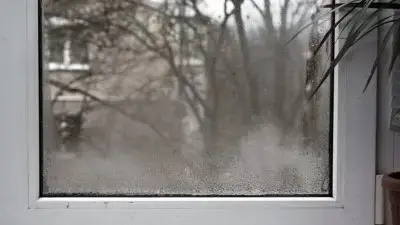The combustion safety test is a critical component of the no-cost home energy assessment, but many homeowners are not aware of what it is and why it is performed.
Here’s everything you need to know about the combustion safety test:
Home Energy Specialist performing a combustion safety test
What is the Purpose of the Combustion Safety Test?
A combustion safety test is performed by a home energy specialist or HVAC technician in order to verify that all combustible appliances are working effectively and are properly vented. The reason that this test is done is to verify that gases —which are created as a byproduct of combustion—are not being trapped within the home.
For example, if a gas dryer is not properly vented, carbon monoxide can build up in living areas. These gases, when trapped inside the home, can result in devastating health issues or even fatalities. The combustion safety test is a simple process that takes about 30 minutes and it can prevent serious consequences down the line.
What Are Some Common Problems Found During the Combustion Safety Test?
The combustion safety test can provide homeowners with a wealth of information, which can allow homeowners to take the necessary steps in order to protect their home and family. Some common problems that can be identified during the combustion safety test and then subsequently addressed by heating and cooling professionals include:
- High carbon monoxide levels in the home. High carbon monoxide can lead to health issues and even death, so it’s important to work to eradicate carbon monoxide in the home and address the issue that is causing the problem.
- Inefficient heating and cooling equipment. The combustion safety test can identify if a heating system is running efficiently or not.
- Draft and Spillage. During the draft test, the home energy specialist monitors how quickly gases are moving up and out of the flue and into the chimney. The specialists also use a smoke stick to monitor if combustible gases are moving up and out of the flue properly or if they are spilling into the living spaces.
What Tools are Used During a Combustion Safety Test?
When a combustion safety test is performed, the specialist will use a variety of tools to test the combustible equipment. Home energy specialists use a tool called a Bacharach, which detects carbon monoxide levels and also gives a reading on the efficiency of heating equipment. During the safety test, specialists use a tool called a monometer, which spits out a reading in pascals that tells the specialist how fast the combustible gases are moving out of the home.
Why is the Combustion Safety Test Important for Your Family’s Welfare?
The combustion safety test will make sure that heating and cooling equipment is running safely and efficiently. A safety test can identify things like high carbon monoxide levels in the home, which can lead to sickness and even death. Having a combustion safety test on heating and cooling equipment is a simple procedure that can provide you with incredible peace of mind.
At HomeWorks Energy, we provide all customers with a combustion safety test as part of their no-cost home energy assessment. In addition, we perform this test at any home in which we will be adding insulation. Insulation works to block airflow in the home, preventing energy from being wasted. Because insulation and air sealing work to seal homes up tighter, it’s important that a combustion safety test is performed to verify that the air quality in the home is good and the structure is safe enough to add insulation.
To learn more about the combustion safety test and to schedule your no-cost home energy assessment, contact us today.








